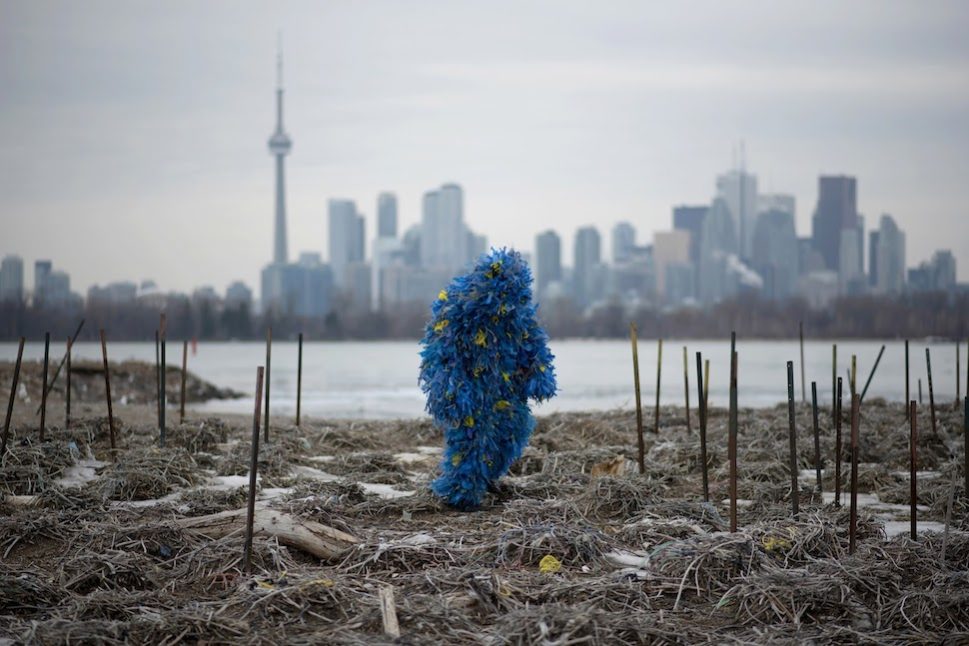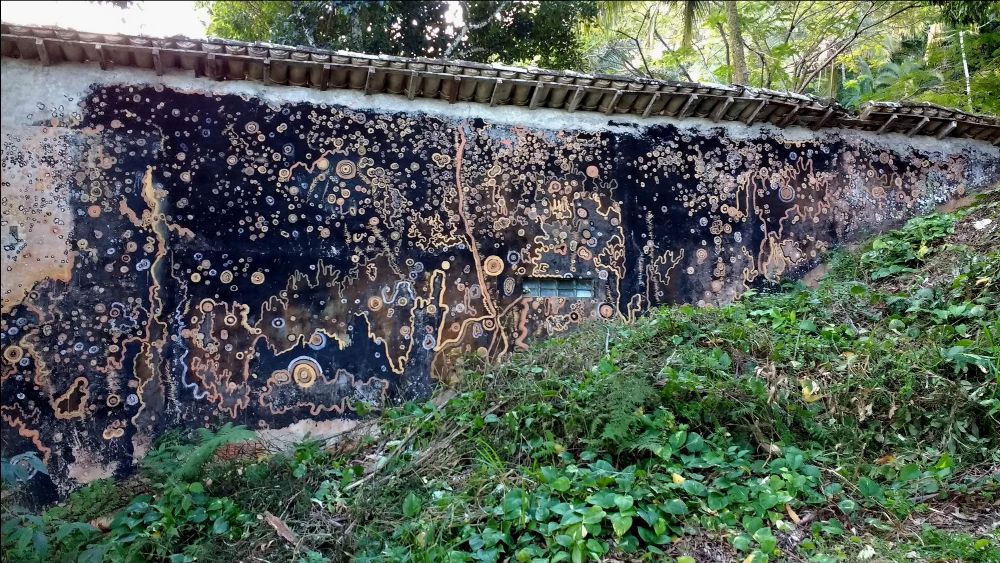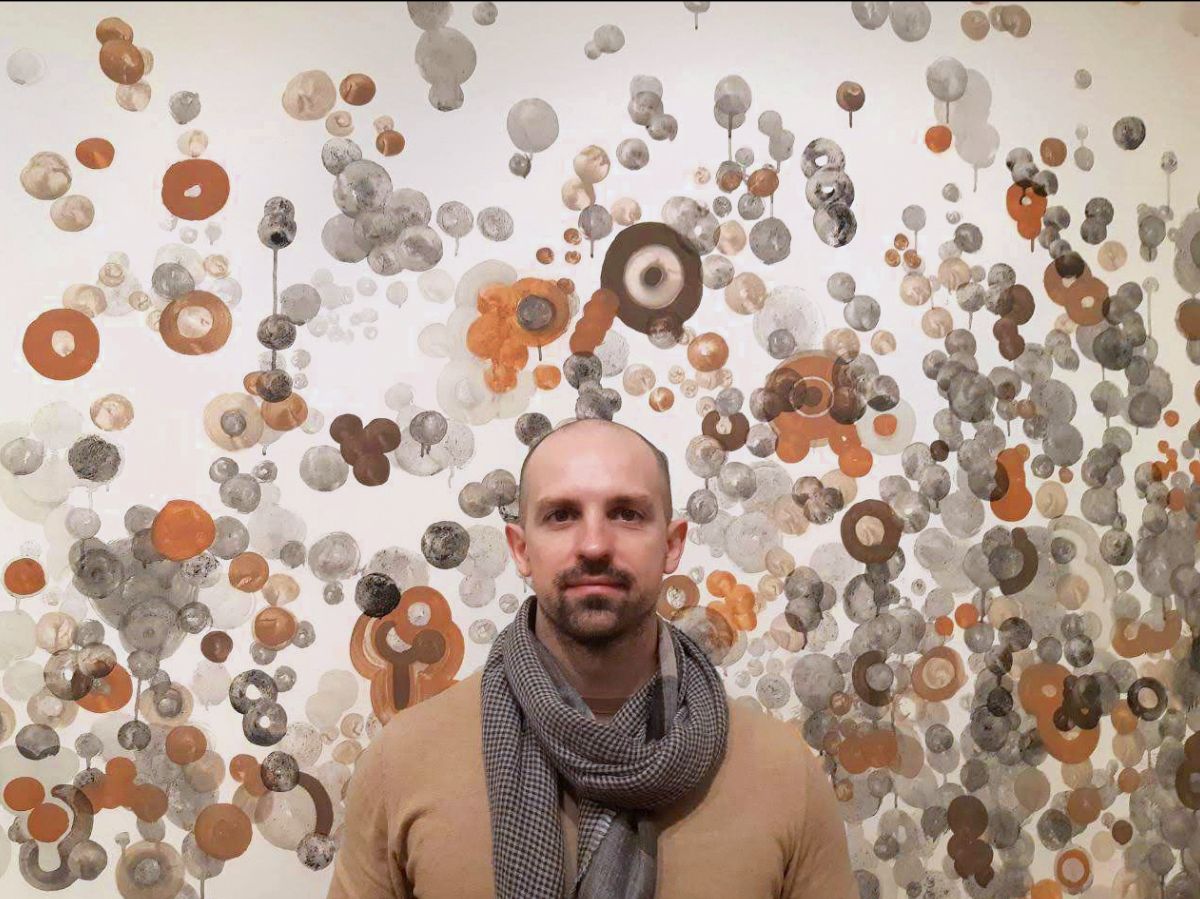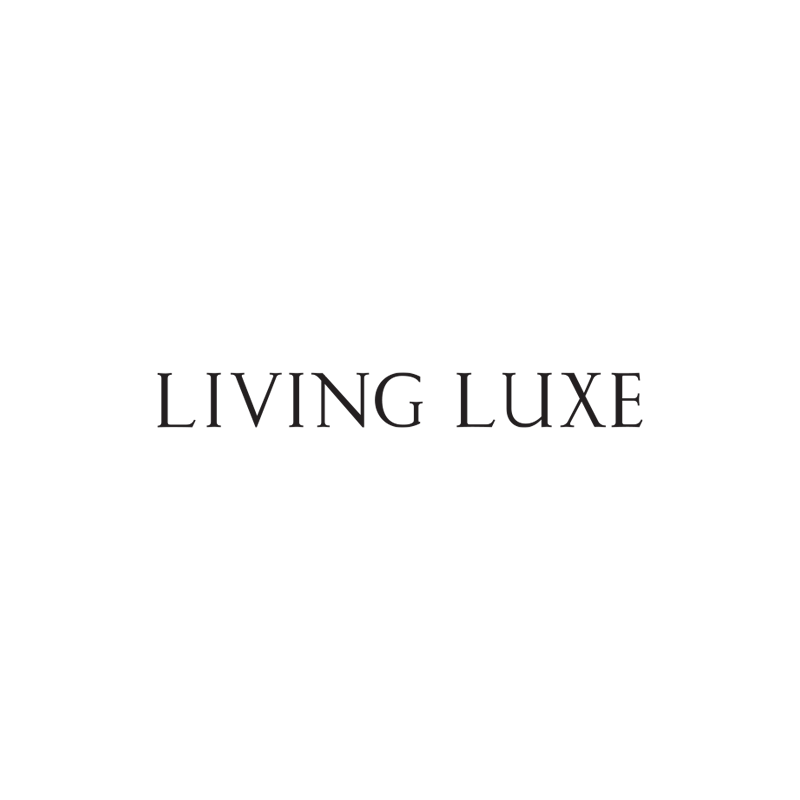

Cole Swanson is a Toronto-based artist and educator, who first participated in DesignTO in 2017. His installation, Terraflora, was featured in Come Up To My Room 2019 and took over the halls of the Gladstone using pigments extracted from regional clays and soils. We interviewed Cole to inquire further into his art making process, and his thoughts on DesignTO and more.
How long have you been involved in DesignTO?
My first experience with DesignTO was in 2017 when I participated in the ‘Living Well’ curated exhibition. The exhibition was held at Craft Ontario and brought together a collection of wonderful artists, designers, and thinkers – its pecha kucha was one of the most interesting talks I have attended. When I saw the open call for Come Up To My Room 2019, I jumped on the opportunity to create an immersive artwork – Terraflora – a mural composed of several locally-harvested mineral colours. The project was an homage to the natural and geological history of Toronto.
What are your favourite things about DesignTO?
As an artist, I operated for years in a tightly bound contemporary art community that oddly enough, had little contact with the world of design. I believe this was a product of my educational experience in an undergraduate system that steadfastly divided art and design into different universes. My first experience working alongside the design community was through DesignTO, and I was amazed at the expansiveness of its networks, its commitment to thinking through critical questions, and its optimistic spirit. Each of the encounters I had with DesignTO resulted in exciting projects, discussions, and collaborations.

Where do you find inspiration for your work?
For me, materials are a bridge to the non-human world – so many networks and relationships we humans have with the biosystems around us are embedded in materials themselves. I find inspiration in the most uncomfortable of those human/non-human relationships. I question why bacteria, molds, insects, and other animals make us squeamish, frustrated, defensive, or angry. Digging deep into these worlds has taught me a lot about the agency of nature in our lives, and what is at stake in our negotiations with the natural world today.
DesignTO is an arts and design showcase, but it is also a platform for engaging lively debate on critical issues that matter deeply – human rights, the environment, our collective future.
How would you describe your practice?
My practice has become about finding ways to build bridges, between disciplines (art and science, for instance) but more importantly, between humans and other living things. My ultimate aim is to learn from and collaborate with nature, rather than to simply represent it. For a project to be a success, it has to demonstrate agency on both sides of the human/non-human relationship. The works I am most proud of were co-created with microflora, beef cattle, swarming insects, stinky sea-birds, and other creepy crawlies with whom I have discovered a newfound love for.
Do you have any future plans for your work you can share with us?
For the past two years, I have been working on a project alongside the double crested cormorant colony on Toronto’s Leslie Spit. This massive water-bird population has been under fire by the Ontario government, land-owners, and commercial fisheries for their apparent decimation of green space and fish populations. Working with the support of a leading cormorant biologist and the TRCA, I have been digging deep into the inner- workings of the colony to subvert the mainstream discourse on their rebounding population, and to hopefully provoke curiosity and empathy toward these fascinating creatures. It has been an amazing project and I am opening the first of several exhibitions this June at Hamilton Artist Inc.

As a reprieve from the politically contentious nature of the cormorant piece, I will be attending a summer residency this July at the Centre d’Art i Natura in the Pyrenees mountains in Catalonia, Spain. The centre is a place where artists and natural scientists come together to explore ideas around ecology and sustainability. I plan to harvest local pigments to create a living mural that will feed the biosystems that thrive on the surfaces of the Romanesque architecture in Farrera, a village nestled high in the mountains. Obviously, I’m super excited about this.
As an artist/designer working in Canada, what role do you feel DesignTO plays in our art and design industry as a whole?
Like all important cultural organizations, DesignTO must remain inclusive and access oriented in the pursuit of critical issues in art, design, and society at large. Now more than ever, arts organizations and festivals like DesignTO must power on under waning support from political administrations for whom a short-sighted, bottom-line approach to governance has become their modus operandi. DesignTO is an arts and design showcase, but it is also a platform for engaging lively debate on critical issues that matter deeply – human rights, the environment, our collective future. It has the capacity to develop the careers of emerging practitioners, support creative industries at a vital moment in history, and mobilize a new generation as agents of change.





























